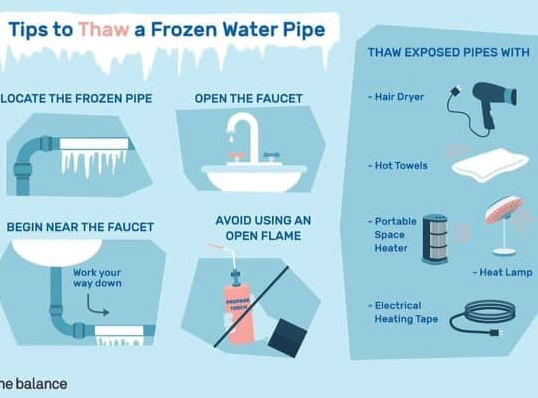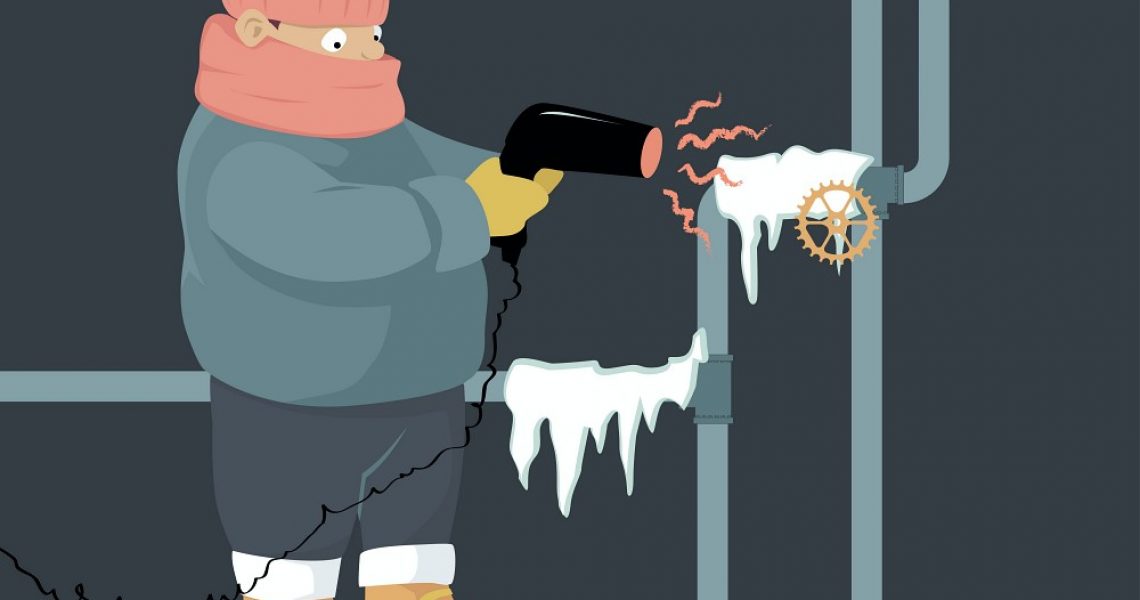San Antonio residents are dealing with many issues caused by the frigid winter weather that is hitting much of the country. In addition to the cold, many people in the area are dealing with the loss of power and freezing pipes (when water freezes, it expands and can cause pipes to break). If you are one of those with frozen pipes, use the following suggestions to thaw them out.
Tips To Thaw Frozen Pipes
When your faucet produces very little, or no water, there is a good chance the reason is a frozen pipe. If you suspect this is the case, the first place to look is at your water meter. If your fixtures are shut off and the meter shows water flowing, it is likely that a pipe has burst.
You should also go through the home looking for dripping water, damp drywall, unusual smells, and strange noises. The most likely locations for a freeze are in the unheated areas of your home like basements, crawl spaces, attics, or the garage.
In addition, you should test out all of your plumbing. Check hot and cold faucets, showers, and flush the toilets to see what, if any, water is still flowing as it should be. Lastly, look outside for any water that is present when it shouldn’t be. When you are sure that there are frozen pipes, use these tips to unfreeze them.

Leave The Faucet On
Leaving the faucet on will allow for any running water to help melt ice that is inside your pipe. Remember, even cold water will help thaw the ice.
Use Your Hair Dryer
Assuming that you still have power, using a hairdryer is a good way to warm up the pipe enough that the ice can melt and water can resume flowing. Start at the faucet and work your way through the pipe.
Use Other Heat Sources
There are a couple of other ways to warm up a pipe. Try using a heating pad, towels soaked in warm water wrapped around the pipe, or adding a heat lamp or space heater to the room where the pipe is located.
Keep The Heat On
Keep using whatever heating methods you can until your water has returned to flowing at its full pressure. If you aren’t able to do so, or can’t find the frozen section, contact your plumbing expert in San Antonio.
Don't Go This Far
Some methods of adding heat to a frozen pipe are dangerous and not worth the risk. Do not use anything that could ignite and make your situation worse. Avoid using a blowtorch, propane or Kerosene heater, etc.
Tips To Prevent Pipes From Freezing
One thing that every homeowner should do — cold climate or not — is to make sure that their exterior walls and pipes have adequate insulation. Exposed pipes are just waiting to be frozen. If you do have exposed pipes, you can take some measures to insulate them yourself. For example, wrapping the pipe with towels or newspaper. It could be just enough to prevent freeing during a cold winter storm.
Other ways you can help prevent a frozen pipe from bursting are: turning your heat up, use fans to blow warmer air into cold rooms, open cabinet doors to allow warm air to reach pipes that are under sinks, let your water run a small stream constantly, remove your garden hose from any outdoor faucets, and keep your garage door closed.


